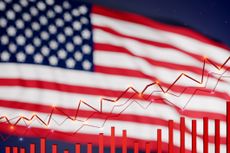Stocks and Shares
The latest news, updates and opinions on Stocks and Shares from the expert team here at MoneyWeek
Explore Stocks and Shares
-

The top funds and stocks to buy according to DIY investors
New data on the top funds, stocks and trusts reveals interest in money market funds has heightened in a bid to reduce risk amid market volatility
By Kalpana Fitzpatrick Last updated
-

Investors will reap long-term rewards from UK equities
Opinion Nick Train, portfolio manager, Finsbury Growth & Income Trust, highlights three UK equities where he’d put his money
By Nick Train Published
Opinion -

Profit from leisure sector as consumers go on spending spree
The UK leisure sector had a straitened few years but now have cash in the bank and are ready to splurge. The sector is best placed to profit
By Rupert Hargreaves Published
-

Top stock ideas for 2026 that offer solidity and growth
Last year’s stock ideas from MoneyWeek’s columnist and trader, Michael Taylor, produced another strong performance. This year’s stocks look promising too
By Michael Taylor Published
-

How to find lost shares
Are you due a windfall from the £2.5 billion of unclaimed shares and dividend payments? We show you how to be reunited with your cash.
By Holly Thomas Published
-

Where to invest – MoneyWeek writers give their tips for 2026
MoneyWeek's investment writers share their tips for 2026, including obesity drugs, a risky miner, central Europe and one of our favourite equity-income trusts
By MoneyWeek Last updated
-

US stocks: opt for resilience, growth and value
Opinion Julian Wheeler, partner and US equity specialist, Shard Capital, highlights three US stocks where he would put his money
By Julian Wheeler Published
Opinion -

SRT Marine Systems: A leader in marine technology
SRT Marine Systems is thriving and has a bulging order book, says Dr Michael Tubbs
By Dr Mike Tubbs Published
-

Goodwin: A superlative British manufacturer to buy now
Veteran engineering group Goodwin has created a new profit engine. But following its tremendous run, can investors still afford the shares?
By Jamie Ward Published
